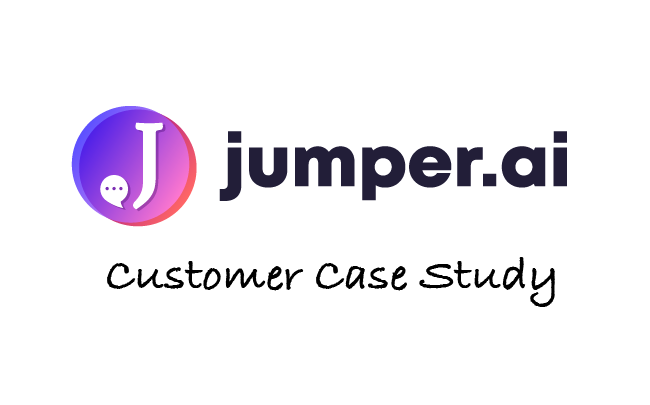Marketing and sales used to be portrayed in stark contrast. Nowadays, there’s an ongoing trend to go for “sales and marketing alignment” — that is, making the two teams work together. There’s little information on how to do it exactly. Many focus on improving the flow of information between the two departments. Is that all that can be done?
Today, I’ll show you a couple of ways the Woodpecker marketing and sales teams cooperate to create a streamlined lead generation process.
Let’s go.
Why is it worth to align sales and marketing for lead gen in a SaaS company?
Making sure your sales and marketing teams are in sync boosts lead generation. Think about that. By talking with the sales team, marketing knows how to design their communication strategy to get to their ICPs. Similarly, sales reps can help leads by sending them the material prepared by the marketing department.
There are two simple reasons why aligning sales and marketing can be helpful in lead generation.
- It supports a cold email strategy — a sales team prepares a cold email campaign while marketing prepares content aimed at the target group’s needs;
- It supports inbound lead generation — marketing generates leads with their marketing strategies for the sales team to push leads further down the sales funnel.
Now I’m going to share the ways we do that in our SaaS company.
How can marketing and sales teams work together?
#1. Sales reps can give content ideas
In Woodpecker, our marketing and sales teams cooperate when it comes to content production. Our marketing strategy focuses on providing our users with a kind of knowledge they can use to power up their lead generation efforts.
However, the marketing team rarely talks with customers. There’s another team that does that on a daily basis — the sales team. Since our sales reps are in touch with our customers, they know their pain points. Whenever they hear of any issue a customer is facing, they report it to the marketing team. Marketing, in turn, creates content around the reported issue. And generate content that speaks to the users.
#2. Marketing produces helpful content for the users
The second point is connected to the previous one. The marketing department produces a piece of content, be it an article, infographic, or video, that’s an answer to a common problem among customers. That piece was inspired by the conversation a sales rep had with one of the potential customers. Just like in the point above. Then, the marketing department tackles it all using marketing resource management solutions for better planning.
After a while, another potential customer experiences the same problem. The sales reps can save time by giving the link to an article that tackles the issue. All in all, the marketing team helps the sales team do their job.
#3. Marketing produces content for cold email campaigns
Let’s say the outbound team makes a new cold email campaign targeted at a specific segment of SaaS companies. The marketing team can write a customer case study with one of the SaaS businesses that is a loyal customer. The outbound team links to the case study in one of the follow-ups they’re going to send what increases the positive reply rate.
I described a lot more situations in which content can support a cold outreach here:
How Great Content Makes You More Persuasive >>
#4. Marketing suggests new platforms for prospecting
It’s the job of a marketing team to snoop around the Internet in search of new platforms. They want to find a new niche space where they can reach their leads. However, once they do encounter such space, they can inform the sales team about it. Because the sales team can use it for prospecting.
We’ve done that in the past in Woodpecker. Our marketing team has found Quora and used it to direct traffic to our blog. However, the sales team used it later for prospecting.
We described how we used Quora for that in two blog posts:
- How We Found our Prospects on Quora: Vol. 1 >>
- How We Asked People on Quora to Attend Our Webinar: Vol. 2 >>
#5. Marketing teaches sales reps how to use social media
The sales team can use social media to close more deals and build a long-lasting relationship with their customers. Cold leads are sure to google your name after they get an email from you. Thus, social media can boost your email outreach. And who knows social media better than the marketing people?
Is it tough to align sales and marketing in a Saas company?
It may seem like aligning sales and marketing takes loads of time and as much effort. However, when you set the right objectives, it doesn’t cost you a lot.
You need to create a culture where two teams feel like they can trust and depend on each other. They need to learn what kind of help they can get from each other to support their lead generation efforts.
READ ALSO

How SaaS for E-commerce Can Generate Leads Through Email: Jumper.ai
Positive feedback from a satisfied customer is always a huge motivator that gives us wings. Recently we had a pleasure to interview Jumper.ai team who shared their experience with Woodpecker and told us a few words about how it helped them reach new customers. Read the full story below.

How to Increase your SaaS Trial-to-Paid Conversion with Personalized Email Campaigns
I write a lot about cold email outreach automation, which is a part of outbound sales. But today I've got something quite different that I want to share with you. I want to show you how your own inbound sales team can use email automation to contact people who have signed up for a free trial. This is something I believe played a huge role in getting Woodpecker from 1 to nearly 3000 B2B customers in 4 years. Keep reading to learn more about the whole process and see some email templates.

Inbound vs Outbound Lead Generation: Which One Works Better?
Inbound vs Outbound – this seems like an endless dispute to me. On the one side, you've got people who claim outbound techniques are just wrong and unethical, whereas inbound is the only effective way to generate new valuable leads. On the other side, there are people who strongly advocate outbound, because that's what has really worked for them like no inbound tactic before. So whose advice are we supposed to follow? Which one works better in B2B: inbound vs outbound marketing?

